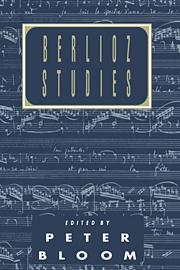Book contents
- Frontmatter
- Contents
- Preface
- List of abbreviations
- 1 The Reboul-Berlioz Collection
- 2 Berlioz and the metronome
- 3 Romeo and Juliet and Roméo et Juliette
- 4 In the shadows of Les Nuits d'été
- 5 Les Nuits d'été: cycle or collection?
- 6 ‘Ritter Berlioz’ in Germany
- 7 The Damnation of Faust: the perils of heroism in music
- 8 Berlioz's version of Gluck's Orphée
- 9 Overheard at Glimmerglass (‘Famous last words’)
- Index
3 - Romeo and Juliet and Roméo et Juliette
Published online by Cambridge University Press: 14 September 2009
- Frontmatter
- Contents
- Preface
- List of abbreviations
- 1 The Reboul-Berlioz Collection
- 2 Berlioz and the metronome
- 3 Romeo and Juliet and Roméo et Juliette
- 4 In the shadows of Les Nuits d'été
- 5 Les Nuits d'été: cycle or collection?
- 6 ‘Ritter Berlioz’ in Germany
- 7 The Damnation of Faust: the perils of heroism in music
- 8 Berlioz's version of Gluck's Orphée
- 9 Overheard at Glimmerglass (‘Famous last words’)
- Index
Summary
The autograph full score of Roméo et Juliette and the first printed scores of 1847 and 1858 contain a note recommending the suppression of the Roméo au tombeau des Capulets movement ‘every time this symphony is not performed before a select audience to whom the fifth act of Shakespeare's tragedy with Garrick's denouement is extremely familiar’. Setting aside Berlioz's reasons for being prepared to sacrifice the most extraordinary music he ever wrote, these were the only occasions on which he stated clearly that for his symphony he had chosen to reject Shakespeare's tomb scene and depict Garrick's version of it instead. But he referred indirectly to his preference on several other occasions. In his Memoirs the Garrick is ‘an inspired discovery, incomparable in its pathos’. Elsewhere in the Memoirs it is described as ‘the desperate strife of love and death contending for mastery’ and ‘extremes of joy and despair drained to the dregs in the same instant, passion's heat chilled in the rigour of death’. Again, in his feuilleton on Bellini's Roméo et Juliette [I Montecchi ed i Capuletti], the tomb scene, ‘presented by great English artists, will remain the most sublime marvel of dramatic art’. Admittedly these remarks are scattered; but they are emphatic enough.
- Type
- Chapter
- Information
- Berlioz Studies , pp. 37 - 79Publisher: Cambridge University PressPrint publication year: 1992
- 2
- Cited by



